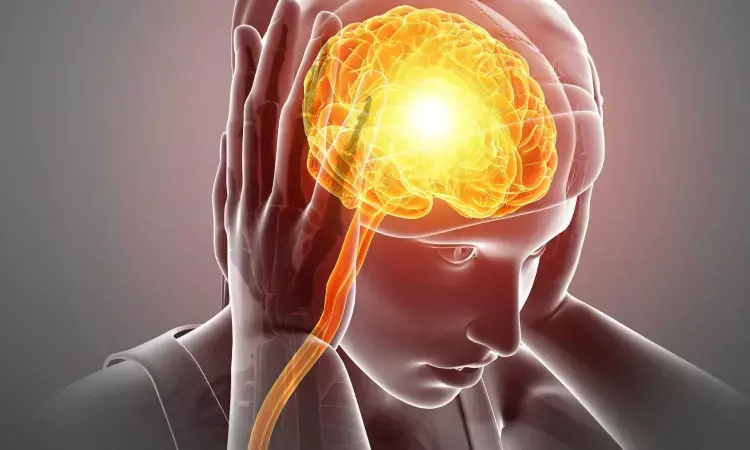- Home
- Medical news & Guidelines
- Anesthesiology
- Cardiology and CTVS
- Critical Care
- Dentistry
- Dermatology
- Diabetes and Endocrinology
- ENT
- Gastroenterology
- Medicine
- Nephrology
- Neurology
- Obstretics-Gynaecology
- Oncology
- Ophthalmology
- Orthopaedics
- Pediatrics-Neonatology
- Psychiatry
- Pulmonology
- Radiology
- Surgery
- Urology
- Laboratory Medicine
- Diet
- Nursing
- Paramedical
- Physiotherapy
- Health news
- Fact Check
- Bone Health Fact Check
- Brain Health Fact Check
- Cancer Related Fact Check
- Child Care Fact Check
- Dental and oral health fact check
- Diabetes and metabolic health fact check
- Diet and Nutrition Fact Check
- Eye and ENT Care Fact Check
- Fitness fact check
- Gut health fact check
- Heart health fact check
- Kidney health fact check
- Medical education fact check
- Men's health fact check
- Respiratory fact check
- Skin and hair care fact check
- Vaccine and Immunization fact check
- Women's health fact check
- AYUSH
- State News
- Andaman and Nicobar Islands
- Andhra Pradesh
- Arunachal Pradesh
- Assam
- Bihar
- Chandigarh
- Chattisgarh
- Dadra and Nagar Haveli
- Daman and Diu
- Delhi
- Goa
- Gujarat
- Haryana
- Himachal Pradesh
- Jammu & Kashmir
- Jharkhand
- Karnataka
- Kerala
- Ladakh
- Lakshadweep
- Madhya Pradesh
- Maharashtra
- Manipur
- Meghalaya
- Mizoram
- Nagaland
- Odisha
- Puducherry
- Punjab
- Rajasthan
- Sikkim
- Tamil Nadu
- Telangana
- Tripura
- Uttar Pradesh
- Uttrakhand
- West Bengal
- Medical Education
- Industry
What is the cause of migraine occuring very often during menstruation?

Germany: Researchers have found in a new study that elevated level of calcitonin gene-related peptide (CGRP) following hormonal fluctuations could help to explain why migraine attacks are more likely during menstruation.
Different sex hormone profiles may affect calcitonin gene-related peptide (CGRP) concentrations in females with a current or past capacity to menstruate with migraine, the study published in the journal Neurology has shown.
As estrogen levels fluctuate, the study found that female participants with migraine levels of the protein CGRP which plays a key role in starting the migraine process also fluctuate.
The study found that female participants with migraine and a regular menstrual cycle had higher CGRP concentrations during menstruation than those without migraine. Those with migraine had blood levels of 5.95 picograms per milliliter (pg/ml) compared to 4.61 pg/ml for those without migraine. For tear fluid, those with migraine had 1.20 nanograms per milliliter (ng/ml) compared to 0.4 ng/ml for those without migraine.
In contrast, female participants taking oral contraceptives and in postmenopause had similar CGRP levels in the migraine and non-migraine groups.
“This elevated level of CGRP following hormonal fluctuations could help to explain why migraine attacks are more likely during menstruation and why migraine attacks gradually decline after menopause,” said study author Bianca Raffaelli, MD, of Charité – Universitätsmedizin Berlin in Germany. “These results need to be confirmed with larger studies, but we’re hopeful that they will help us better understand the migraine process.”
The study involved three groups of female participants with episodic migraine. All had at least three days with migraine in the month before the study. The groups were those with a regular menstrual cycle, those taking oral contraceptives, and those who had gone through menopause. Each group was compared to female participants of similar ages who did not have migraines. Each group had 30 people, for a total of 180.
Researchers collected blood and tear fluid to determine CGRP levels. In those with regular menstrual cycles, the samples were taken during menstruation when estrogen levels are low and around ovulation, when levels are the highest. In those taking oral contraceptives, samples were taken during the hormone-free and hormone-intake time. Samples were taken once from postmenopausal participants at a random time.
“The study also suggests that measuring CGRP levels through tear fluid is feasible and warrants further investigation, as accurate measurement in the blood is challenging due to its very short half-life,” Raffaelli said. “This method is still exploratory, but it is non-invasive.”
Raffaelli noted that while hormone levels were taken around the time of ovulation, they may not have been taken exactly on the day of ovulation, so the fluctuations in estrogen levels may not be fully reflected.
Reference:
Bianca Raffaelli, Elisabeth Storch, Lucas Hendrik Overeem, Maria Terhart, Mira Pauline Fitzek, Kristin Sophie Lange, Uwe Reuter. Sex Hormones and Calcitonin Gene–Related Peptide in Women With Migraine: A Cross-sectional, Matched Cohort Study. Neurology, 2023; DOI: 10.1212/WNL.0000000000207114
Dr Kamal Kant Kohli-MBBS, DTCD- a chest specialist with more than 30 years of practice and a flair for writing clinical articles, Dr Kamal Kant Kohli joined Medical Dialogues as a Chief Editor of Medical News. Besides writing articles, as an editor, he proofreads and verifies all the medical content published on Medical Dialogues including those coming from journals, studies,medical conferences,guidelines etc. Email: drkohli@medicaldialogues.in. Contact no. 011-43720751


